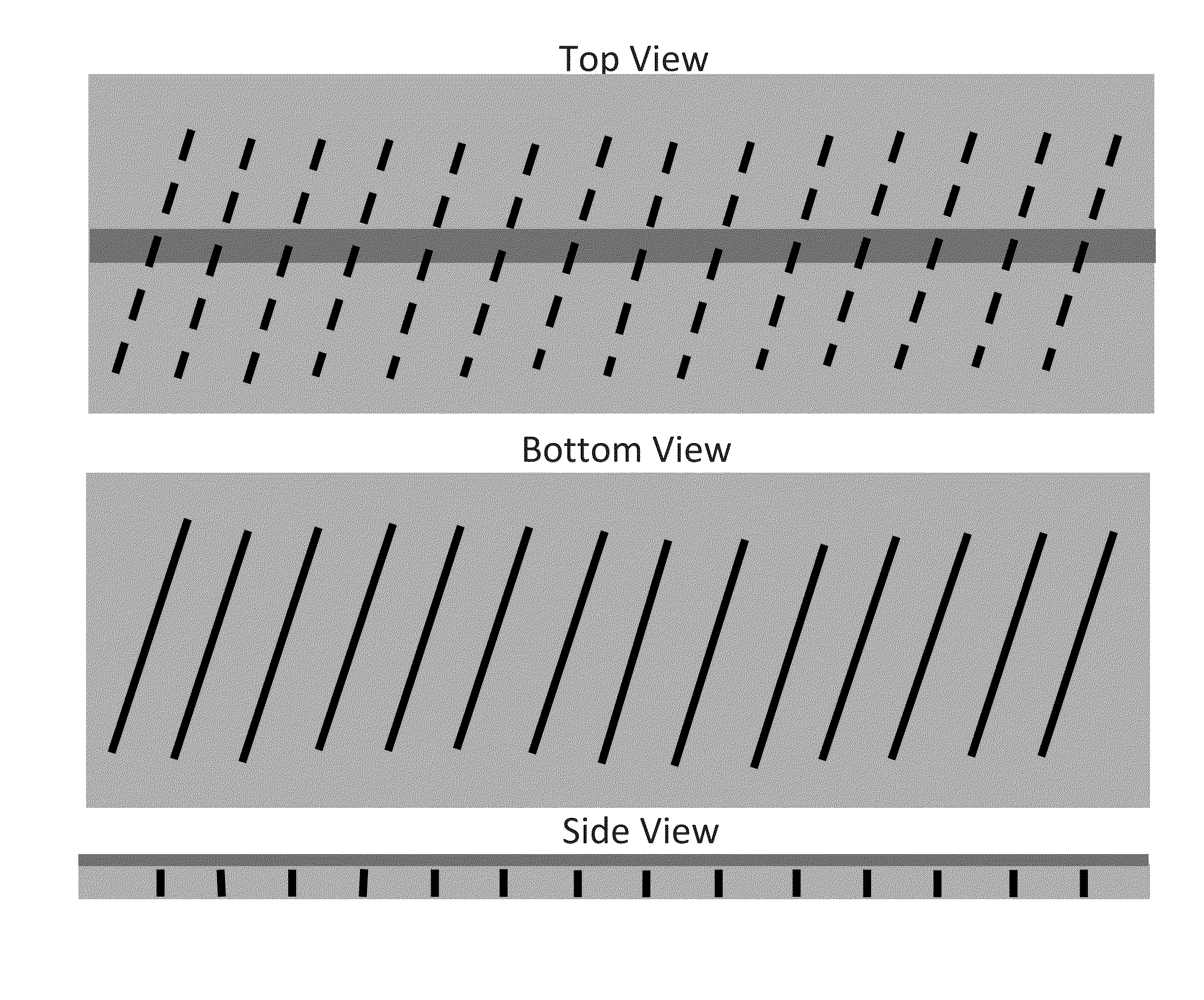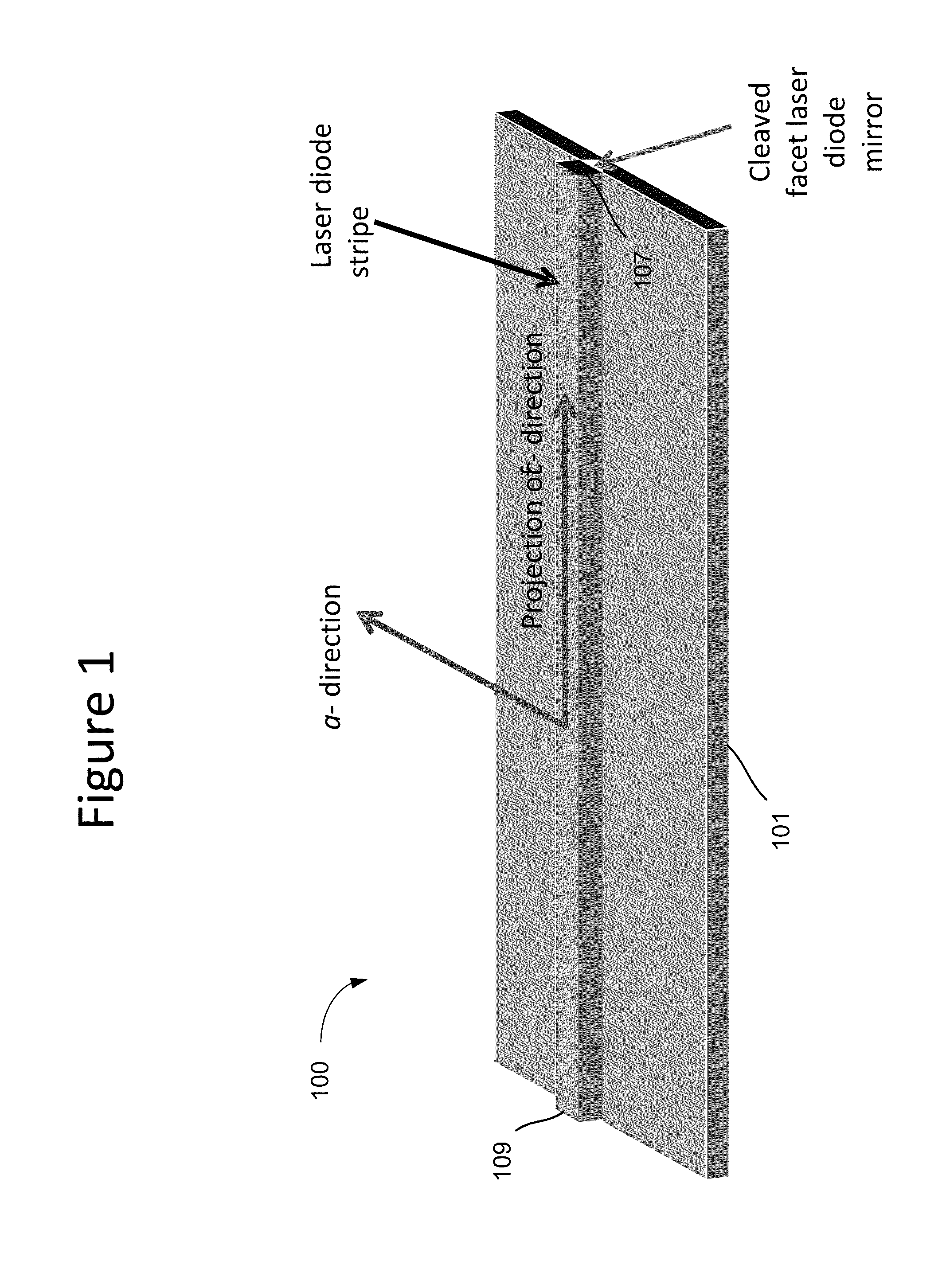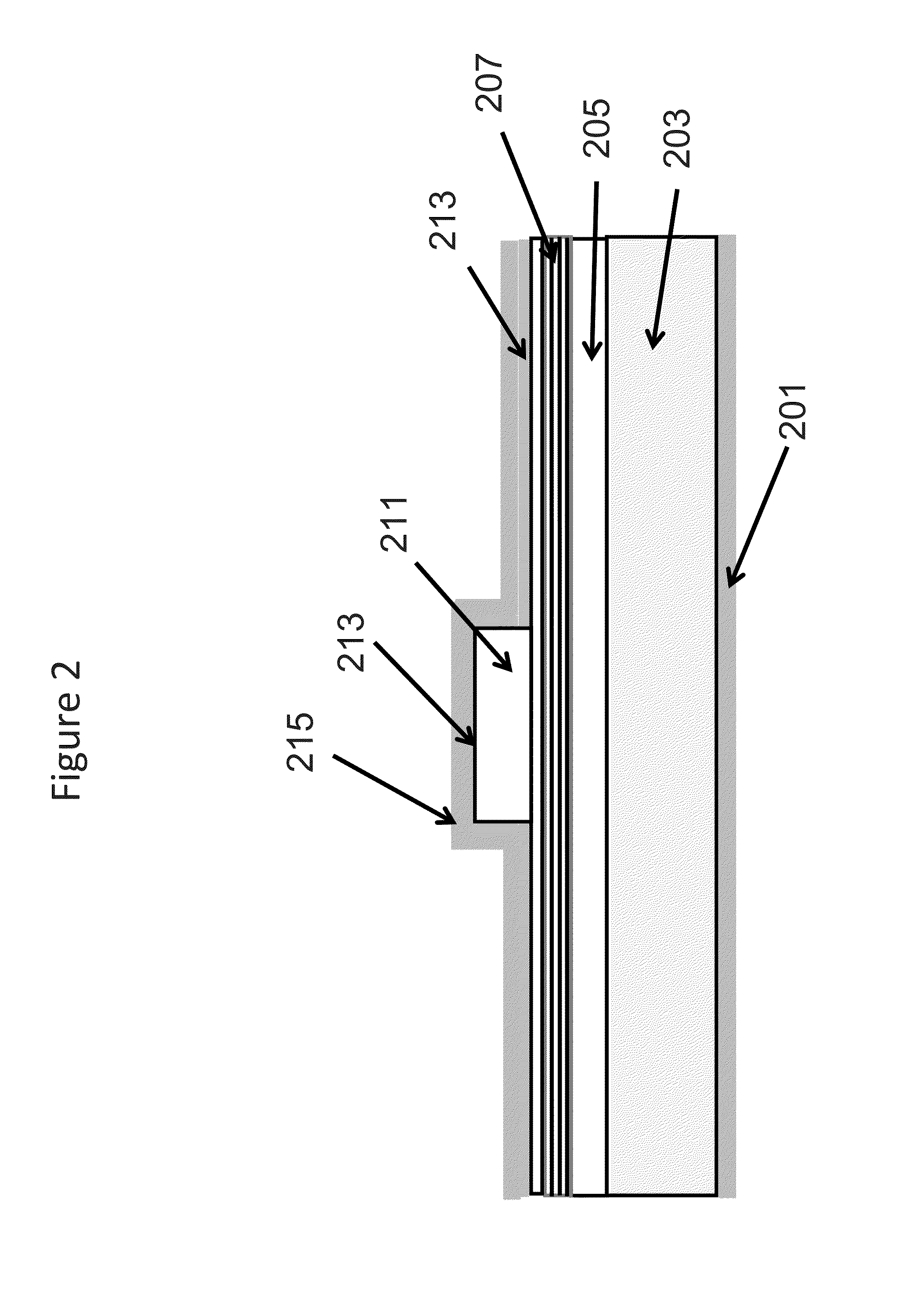Laser diodes with scribe structures
a laser diode and scribe technology, applied in the field of optical devices, can solve the problems of reducing the efficiency of the wall plug, reducing affecting so as to improve the cleavage of the laser device structure, and improve the efficiency of the laser device. the effect of cost-effectiveness
- Summary
- Abstract
- Description
- Claims
- Application Information
AI Technical Summary
Benefits of technology
Problems solved by technology
Method used
Image
Examples
Embodiment Construction
[0026]FIG. 1 is a perspective view of a laser device 100 fabricated on a bulk substrate according to an embodiment of the present invention. In an exemplary embodiment, the optical device includes a gallium nitride substrate 101 having a non-polar crystalline surface region characterized by an orientation of about −2 degrees to about 2 degrees towards (000-1) and less than about 0.5 degrees towards (11-20). In a specific embodiment, the gallium nitride substrate is a bulk GaN substrate having a nonpolar crystalline surface region. In certain embodiment, the substrate is characterized by a semi-polar orientation. In a specific embodiment, the bulk GaN substrate has a surface dislocation density below 105 cm−2 or 10E5 to 10E7 cm-2. The nitride crystal or wafer may comprise AlxInyGa1-x-yN, where 0≦x, y, x+y≦1. In one specific embodiment, the nitride crystal comprises GaN. In one or more embodiments, the GaN substrate has threading dislocations, at a concentration between about 105 cm−2...
PUM
 Login to View More
Login to View More Abstract
Description
Claims
Application Information
 Login to View More
Login to View More - R&D
- Intellectual Property
- Life Sciences
- Materials
- Tech Scout
- Unparalleled Data Quality
- Higher Quality Content
- 60% Fewer Hallucinations
Browse by: Latest US Patents, China's latest patents, Technical Efficacy Thesaurus, Application Domain, Technology Topic, Popular Technical Reports.
© 2025 PatSnap. All rights reserved.Legal|Privacy policy|Modern Slavery Act Transparency Statement|Sitemap|About US| Contact US: help@patsnap.com



